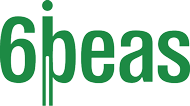I was fortunate enough to recently find an early 2019 podcast hosted by Lisa Leong called “this working life” – this podcast interviewed Psychological Safety researcher and author Dr Amy Edmondson and Viva Energy, Executive General Manager of People and Change, Jodie Haydon.
It is one of the best interviews I have listened to and full of great discussion, examples and tips that cover Psychological Safety, Leadership, Employee Engagement and Customer Centricity.
If you don’t have time to listen let me highlight a few key themes for you:
Developing a framework of Psychological Safety in the workplace
1. Setting the stage/create the framework – “We don’t know everything yet, we need to hear from you”.
2. Become Explicitly Curious all the time. I am interested in what you are saying. I want to hear more from you. What is happening? What are we experiencing? Any ideas on how we can change this?
3. Respond in productive ways to bad news – in a learning orientated way. Learn from mistakes don’t get caught up in the blame game.
Concept of psychological safety – a description of a workplace climate where people know that their voice is welcome. Importantly, sharing information is critical, work relevant content must be shared because we cannot hold back or it exposes the organisation, team and individuals to risk.
Two greatest risks:
1. We won’t see a failure coming that we could have averted because of lost concerns
2. Lost opportunities.
Fear
People hold back due to human instinct, it has kept us safe in the past to bottle things up, not “rock the boat”, not to challenge or ask questions or we are afraid to take risks because we are afraid of the consequences of failure. It’s human instinct to act in a way that stays within the status quo, but its counter productive to self and team and therefore organisation.
A climate that sets out to do things differently.
Remove away from cultural undertones of “don’t speak up about problems only successes” or a tendency to “agree with the boss”.
Role of fear inside of organisations – there is always be fear and perfectly ok to be afraid to miss a deadline or of competitor . What is not ok is to experience interpersonal fear – to fear your boss or your colleagues. That fear puts us at risk – business risk, safety risk and individual risk to our health.
Other kinds of fear can be motivating but Amy wants to banish interpersonal fear in the workplace.
Management by fear is outdated and counterproductive. Neuroscience is clear that when we experience fear it short circuits our brain, it diverts cognitive resources used for problem solving, short term memory, analytic reasoning.
You will not do as good a job if you are feeling fear.
Leadership
Jodie Haydon, and the leadership team at Viva Energy need a huge round of applause for their initiative in developing a culture around team psychological safety to drive business performance including employee engagement, customer centricity and revenue growth during what was described as a time of high uncertainty and complexity.
- Driving a change in leadership required up-skilling competencies in leadership and redefining what leadership is.
- Changing behaviours was the most difficult
- Reduced the hierarchical structures and traditional leadership management including open plan for everyone and flattening structures so it was more team based and removed barriers to participation and sharing.
- Driving a customer centric culture by also driving employee engagement
- Focus on the purpose and mission of the organisation and linking that to every person’s role
Creating a culture of opening sharing and contributions
Leadership development is an ongoing process
Hierarchical Structures
Jodie did mention that it took some time to remove a lot of the traditional mindsets and behaviours of leadership. But they saw these traditional layered, hierarchical structures as one of the biggest barriers to employee engagement, participation and feedback.
Amy Edmondson commented the “effects of hierarchy will always be with us but the affects can be mitigated“. For example a structure that allows people to speak up more, allow their employees to contribute more.
Diagnostics
Assess the psychological safety of your workplace environment. Assess the leadership skills and competencies of the team. 6peas using PS25 Psychological Safety Assessment Tool to assess/audit and also diagnose key issues around leadership and team safety.
Jodie mentioned conducting leadership assessments with 360 degree surveys and identifying areas that needed leadership development.
Case Studies
VW and gas emissions car – a culture driven by performance at all costs lead to engineers being unable to tell management that their goals were unrealistic and instead they engineered an emissions testing platform that cheated at emissions measurement and created one of the biggest and most costly initiatives in the car industry.
Viva Energy – a great example of the rewards of driving a psychological safe workplace to achieve business performance and mitigate risks.
You can listen to the podcast here:
This working life interview with Amy Edmondson & Viva Energy

